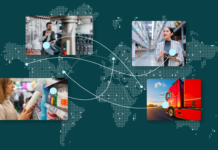Many of us might not realise it, but artificial intelligence (AI) has quietly found its way into industries, at different levels of sophistication and maturity. Behind the scenes, industrial AI is already at work — in engineering design processes doing replication tasks. From automating pipe routing in plant operations, to calculating space and sunlight coverage optimisations for solar panel deployments, AI can make a significant impact.
The real difference ahead is harnessing generative AI with less human supervision and intervention to transform how we work for tomorrow’s economy. We have seen this idea expressed briefly in the now trendy “prompt engineer” role. Beyond short-term popularity, we must look to the future, which will require us to apply generative AI in ways that create new opportunities and positively transform jobs. These are some ways to imagine the possibilities of generative AI in industrial-specific scenarios.
An industrial inference engine
The big concern with immediate-term applications of generative AI today is the reliance on vast volumes of public data to drive momentum in product development and value creation. New sources of information are ingested into large language models (LLMs) automatically, with less human supervision invested into the finer details and contextual needs of the industry or businesses. This perpetuates the risks of LLMs hallucinating linguistically coherent answers detached from factual reality. This may disincentivise an industrial operation from exploring generative AI.
For example, an AI interface may make a great online customer-service bot widget. However, it could prove hazardous if one presumes that this same AI model can be used to replicate an on-site general engineering helpdesk bot. The contexts and ways in which data and language are wired are entirely different.
In this case, it is better to reframe where and how generative AI is applied altogether.
What if enterprises used AI to automate data hierarchies and relationships? Automatic data inferencing allows users to find and use their data without hierarchy or structured entity relationships. It indirectly uses the LLM as an inferencing engine to know how data is interrelated, not only within a single data store but across multiple types of data in different forms — documents, drawings, and objects, among others.
The idea here is to build an inference engine much like how we intuitively use internet search engines today, filling in queries akin to asking another person a question. We don’t rely on heavily structured query syntax, and we don’t get ourselves frustrated by searching lines of code to find the missing indents that is stopping the computer from executing search queries. We let the inference engine account for our misspellings and typos, and use its natural language power to aid us.
In short, we can ask questions like talking to a fellow engineer.
This is one way we can make purposeful solutions through generative AI. It is not a marketing gimmick or a text-based party trick. By using elements of generative AI for its computing strengths, and not a wholesale appropriation, we can create more valuable adoption of AI across industries and businesses.
Thinking out of the box
Human intervention and guidance are the difference in making AI work for improved business outcomes. Let’s think of a simple generative AI prompt: “Design an urban mobility transportation vehicle.” Instinctively, we may have an image of a wheel at the back of our minds. However, machines are not inhibited by the kinds of natural biases as to what defines a vehicle — such as requiring four wheels or a boxy frame. Hence, an industrial AI application can computationally generate initial design sketches that are “out of the box.”
These initial designs may fall across the spectrum from generic to wacky, and even downright unsafe. This is exactly the point in the process where human intervention and supervision can make the difference. Right here, human intuition and attention is of utmost value and of greatest effectiveness.
It is in this stage and beyond where we could see new job types or transformation of roles complementing AI.
Today, professional engineers are supervising and signing off designs after thorough quality analysis. These engineers are iterating on past designs and improving upon them. Generative AI can be integrated at this stage in the design process, splitting apart old engineering designs using pattern recognition algorithms, proposing improved designs, and iterating new original designs altogether.
To reiterate, professional engineers are still fundamental and essential to the design process. The human element of the professional engineer is transformed, to one of a supervisory specialist, intervening where necessary given their breadth of expertise, experience, and natural human intuition.
The human makes the final call
The advantage of AI lies in its computational and mathematical ability to expand its outputs. The more parameters fed into its probabilistic and non-deterministic processes, the more it “thinks outside the box” and comes up with ways of deriving things our human mind might not have considered or imagined. Still, the human makes the final call.
Globally, we are seeing government regulations for AI already in place. These regulations will continue to be refined to eventually make human oversight and an individual accountable in the sign off for AI in work.
In the context of AI implementation, data security is a paramount concern. Ensuring that raw customer data does not come into contact with AI training models is essential. The development of algorithms with federated machine learning techniques and the establishment of secure, firewalled environments allows for safe interaction with AI models and ensures the isolation of data sets. This approach emphasises the importance of human judgement, guided by intuition and ethics, from the initial concept to the final solution.
Indeed, AI is not going to “steal” our jobs, it is going to elevate the value and distinctiveness of human cognition. The road ahead for Industry 5.0 is the hybridity of AI automation with human supervision making the final call on decisions.
















